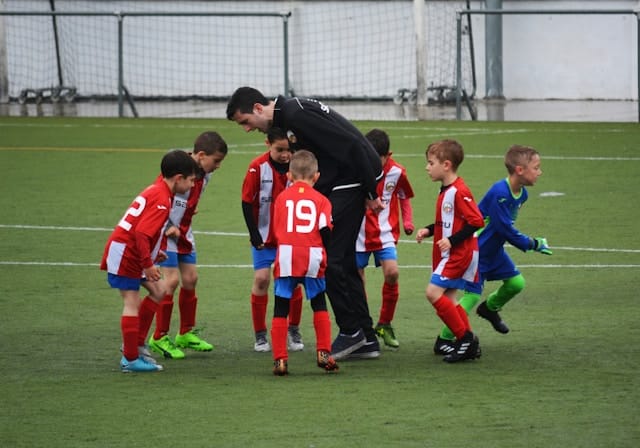In the realm of sports, specifically soccer, concussions have always posed a significant concern. These injuries hinder athletes’ ability on the field, but they also impact cognitive abilities. Thus, recovery isn’t just a physical process—it requires a cognitive approach as well. One method that has received considerable attention in studies is dual-task training. This method targets both cognitive and motor skills, offering an integrated approach to concussion recovery. Over recent years, platforms like Google Scholar, PubMed, CrossRef, and others have provided a wealth of research on this topic. In this article, we’ll guide you through the complex world of dual-task training, highlighting its role in dealing with concussion recovery among soccer players.
Understanding Concussions and Their Impact in Sports
Before we delve into the nitty-gritty of dual-task training, let’s first understand what a concussion is and why it’s such a significant issue in sports like soccer. A concussion is a type of Traumatic Brain Injury (TBI) that affects your brain function. It usually happens due to a blow to the head, which is quite common in contact sports like soccer.
Sujet a lire : How to Build a High-Performance Culture in a Newly Formed Cricket Team?
A study published on PubMed revealed that approximately 1.6-3.8 million sports-related concussions occur annually in the United States. These injuries can result in a range of symptoms, including cognitive impairment, physical deficits such as balance and gait problems, and emotional disturbances.
The cognitive deficits can include issues with memory, attention, and processing speed, affecting an athlete’s ability to perform both on and off the field. The physical deficits can impact an athlete’s ability to run, balance, and perform the fine motor skills necessary for soccer. Thus, it becomes imperative to address these issues during the recovery process, necessitating an approach that targets both cognitive and motor skills. This is where dual-task training comes into play.
A voir aussi : How Can We Optimize Agility Ladder Drills for Speed Skaters’ Off-Ice Training?
Dual-Task Training: A Two-Pronged Approach
Dual-task training is a technique that involves performing a cognitive task and a motor task simultaneously. The idea is to create conditions that mimic real-world situations, where individuals often need to perform multiple tasks at once. In terms of concussion recovery, it’s linked to improvements in both cognitive performance and motor skills, such as gait and balance.
In a study published on CrossRef, researchers found that dual-task training could improve gait speed and stability in athletes recovering from a concussion. Moreover, the cognitive tasks involved in the training helped improve their mental agility, allowing them to return to their pre-injury cognitive performance levels faster.
How Dual-Task Training Works in Practice
When it comes to dual-task training, the key is in the balance. It’s crucial to provide a cognitive task that challenges the athlete but doesn’t overwhelm them. Similarly, the motor task should also be at an appropriate level for the athlete’s current physical capabilities.
As an example, an athlete might be asked to walk (the motor task) while performing a cognitive task such as doing calculations in their head or remembering a list of words. The aim of dual-task training is to improve both the cognitive and motor task performance, even when they are performed simultaneously.
The Importance of Dual-Task Training in Concussion Recovery
Concussion recovery is a complex, multi-faceted process, requiring careful management and individualized treatment plans. The role of dual-task training in this process is becoming increasingly clear with the wealth of research available from platforms like Google Scholar, PubMed, Crossref, and more.
Dual-task training provides a holistic approach to recovery, targeting both the cognitive and physical symptoms of a concussion. It not only aids in physical recovery, specifically improving gait and balance, but also enhances cognitive function, helping athletes return to their pre-injury state more quickly.
Moreover, dual-task training can also help in detecting any lingering effects of a concussion. According to a study published on PubMed, athletes who had reported being symptom-free post-concussion still demonstrated diminished dual-task performance. This suggests that dual-task training can serve as a tool to evaluate an athlete’s readiness to return to play.
Dual-Task Training: A Step in the Right Direction
The impact of concussions in sports, particularly in soccer, cannot be overstated. Thorough and well-rounded recovery processes are critical to ensure athletes can safely return to their sport. In this context, dual-task training provides a promising approach, targeting both cognitive and motor recovery.
Research continues to shed light on the importance of dual-task training in concussion recovery. Platforms such as Google Scholar, PubMed, and CrossRef serve as a testament to the growing body of evidence in favor of this method. By combining cognitive and motor tasks, dual-task training provides a comprehensive approach to concussion recovery, aiding athletes in their return to pre-injury performance levels.
Evaluating the Efficacy of Dual-Task Training
To comprehend the efficacy of dual-task training in concussion recovery, we must delve into the details of research studies that have been conducted on this subject. A systematic review of various studies published on platforms such as Google Scholar, PubMed, Crossref and others, can provide a comprehensive understanding of the impact this method has on soccer players recovering from a concussion.
A study published in Sports Medicine highlighted that dual-task gait examinations were more sensitive than single-task evaluations in detecting residual balance deficits in athletes post-concussion. This means that athletes undergoing dual-task training could potentially experience a more comprehensive recovery, targeting not only physical symptoms but cognitive deficits as well.
Another research on PubMed demonstrated that dual-task training could effectively enhance the working memory of athletes during the recovery process. The ability to perform cognitive and motor tasks simultaneously, according to this study, could expedite the process of return to play.
The results from these studies and others provide compelling evidence that dual-task training could be a key component in concussion recovery. While more research is undoubtedly needed, current studies suggest that this method can lead to symptom resolution more efficiently than traditional single task techniques.
Dual-Task Training: A Viable Tool in Physical Therapy
In the world of physical therapy, the application of dual-task training is becoming more prominent. Therapists are increasingly incorporating cognitive and motor tasks into their therapy sessions to help athletes recover from concussions. These tasks are designed to challenge the brain and body simultaneously, thus aiding in the restoration of normal function in a more integrated way.
One way physical therapists use dual-task training is through the inclusion of cognitive tasks such as mental arithmetic or memory games while the athlete engages in a motor task like balance exercises. The purpose of this approach is to replicate real-world scenarios in which athletes are required to use both their cognitive and motor skills in tandem.
The potency of this method lies in its potential to identify lingering deficits that might not be apparent during single-task evaluations. As highlighted by several studies published on PubMed and Crossref, athletes who reported being symptom-free post-concussion still showed decreased performance during dual-task evaluations. This underscores the utility of dual-task training not only in facilitating recovery but also in determining when an athlete is ready to return to play.
Conclusion: Moving Forward with Dual-Task Training
The field of sports medicine, especially in relation to concussion recovery, is constantly evolving, and the function of dual-task training in this progress is becoming increasingly pronounced. The wealth of scientific research available on platforms like Google Scholar, PubMed, and Crossref, is instrumental to understanding and enhancing the efficacy of this approach.
While dual-task training does not claim to be a magic bullet for concussion recovery, its ability to address both cognitive and motor deficits concurrently makes it a promising tool. It not only aids in the recovery of physical symptoms such as gait and balance issues but also enhances cognitive abilities like memory and attention.
As more research continues to validate the benefits of dual-task training, it is well on its way to becoming a standardized component in concussion recovery regimes. This method’s holistic approach is a significant stride in the right direction, ensuring that athletes can return to play safely and efficiently post-concussion.






